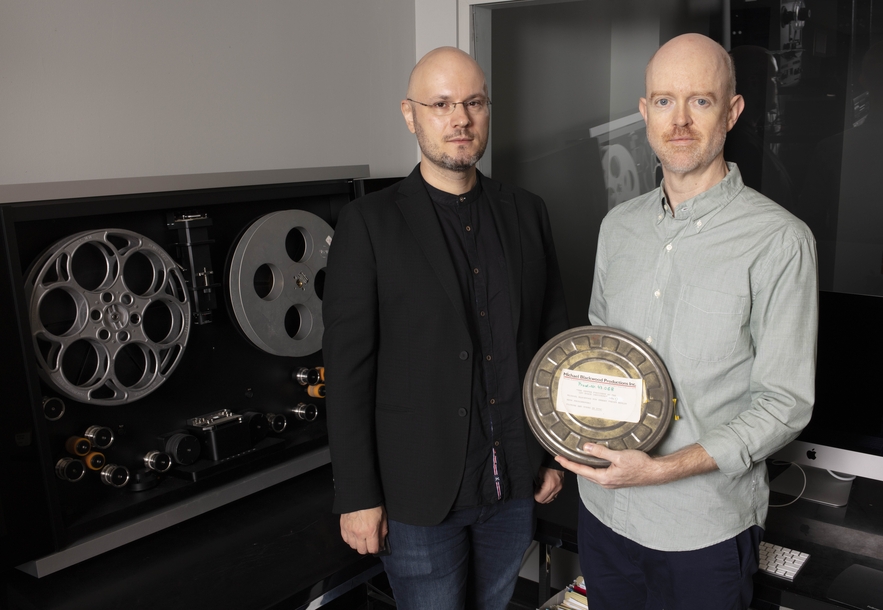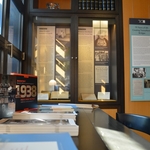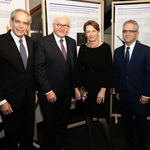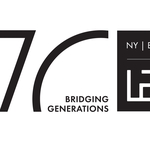Digitizing LBI’s Audiovisual Treasures
- Author
- Chris Bentley
- Date
- Thu, Mar 14, 2024
LBI holds a rich variety of analog audiovisual materials across its myriad archival collections. Among the diverse formats are open-reel audio tapes, cassette tapes, VHS tapes, film reels, and phonograph records. These items capture interviews, lectures, musical performances, radio programs, and other invaluable primary sources. Preserving these fragile formats through digitization and making them accessible to the world in perpetuity are critical to LBI’s ongoing mission to help safeguard and promote the legacy of German-speaking Jewry.

Analog audiovisual formats face numerous preservation threats. Film reels are vulnerable to decomposition of the film base, color fading, weakening of splices and perforations, and audio track deterioration. Magnetic tape can become brittle, stretched, and demagnetized, and the binding agents can break down over time. Phonograph records suffer from warping, oxidation, and groove damage from playback. And mold growth is an ever-present risk with them all.
In addition to the preservation challenges, playback devices for quite a few obsolete formats are becoming increasingly scarce.
The urgency to take action to prevent irrevocable loss is pressing. To address these issues, LBI has undertaken an extensive initiative to digitize these materials before further degradation or obsolescence encroaches. A substantial amount of preparation is required before digitization occurs. This includes condition assessment, format identification, understanding and describing the content, metadata creation, and active engagement with the materials.
Digitization is carried out by staff at the Center for Jewish History (CJH). LBI benefits immensely from the expertise and resources available through its collaboration with CJH. Their suite of digitization technology and services accommodates a broad assortment of legacy media formats. Among the available tools, the standout is perhaps the Cintel Scanner from Blackmagic Design, which supports 16mm and 35mm film, and features high dynamic range and Ultra HD capabilities.
Once digitized, the fi les are ingested into Rosetta, a digital preservation and asset management system that ensures long-term storage, accessibility, and security. They are made available through LBI’s online catalog (www.lbi.org/catalog), greatly improving access to the materials and enabling scholars, researchers, and the wider public to explore the richness of the Institute’s collections.
Several examples showcase the range of materials that have been digitized to date. One such highlight is a 16mm film reel containing unique footage documenting the visit of West German president Karl Carstens to the Leo Baeck Institute (AR 12145). The event took place at LBI’s previous location on the Upper East Side in 1983. Another compelling example is a set of audio interviews from the Irma Simon Collection (AR 6649), where episodes are recounted from a family’s period in hiding in Berlin during World War II.
Finally, various audio and video recordings of musicologist, educator, and author Joseph Braunstein have been digitized from the Joseph Braunstein Collection (AR 25072, Addenda AR 25848). These items encompass interviews, an oral autobiography, and several live musical performances.
LBI’s ongoing digitization initiative is vital to ensuring long-term survival of and access to its audiovisual treasures. These cherished items have been bestowed to LBI by individuals, families, and organizations over many decades, and further donations related to German-Jewish history are always welcome. Every addition holds the potential to enhance our understanding of the past and illuminate the future.




